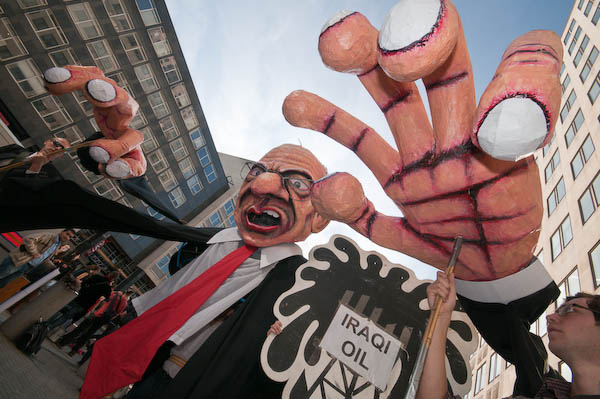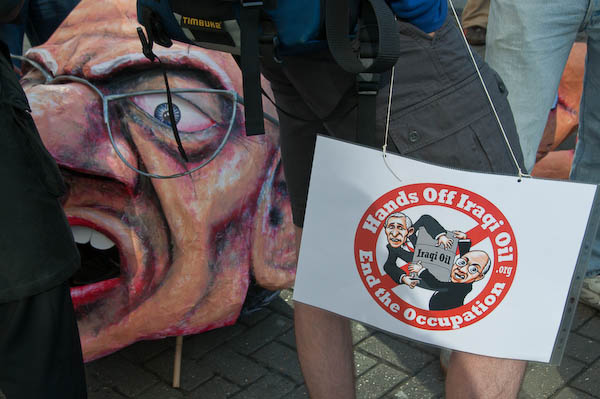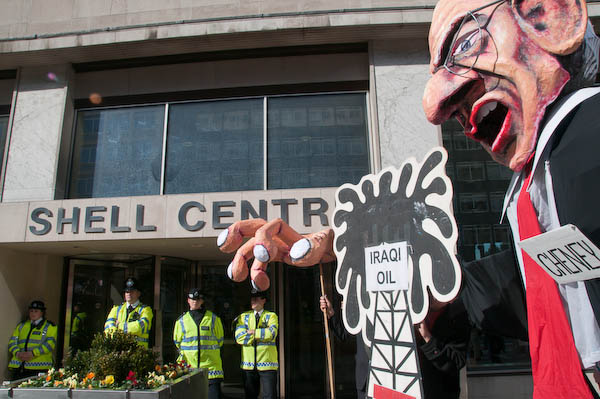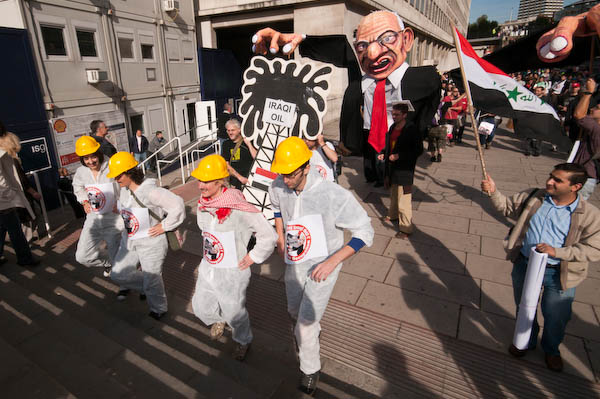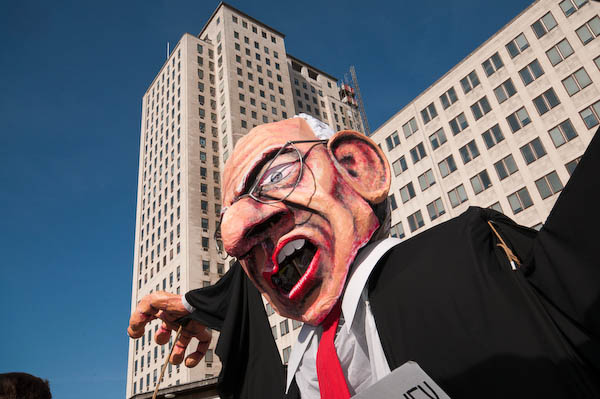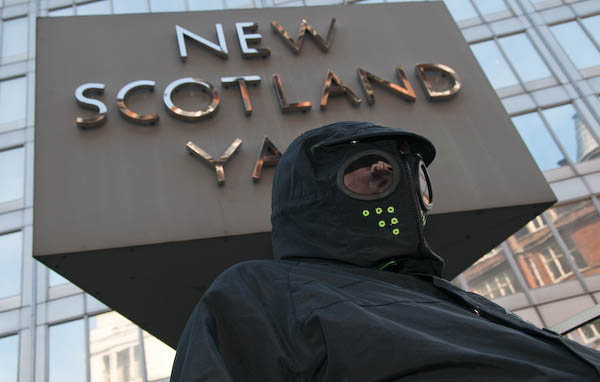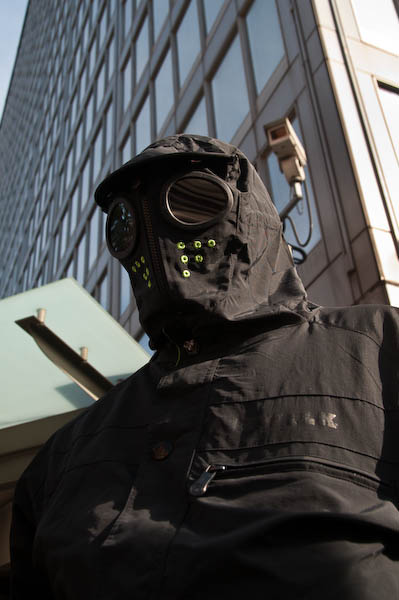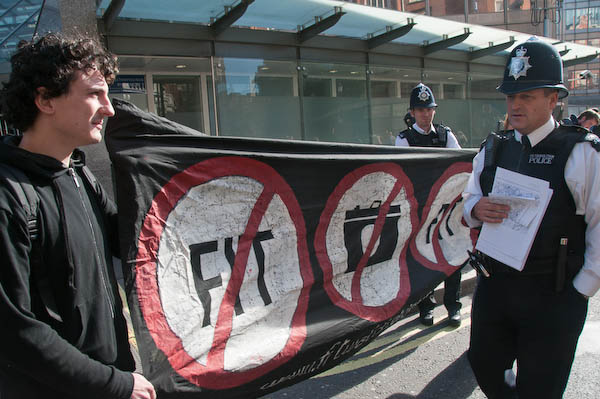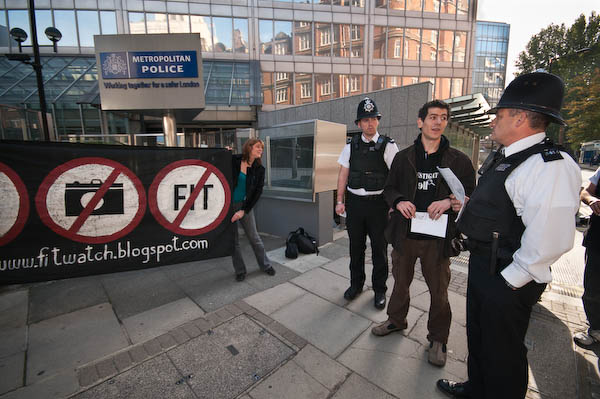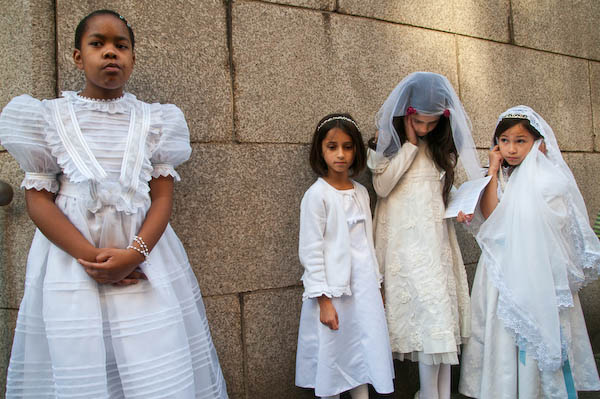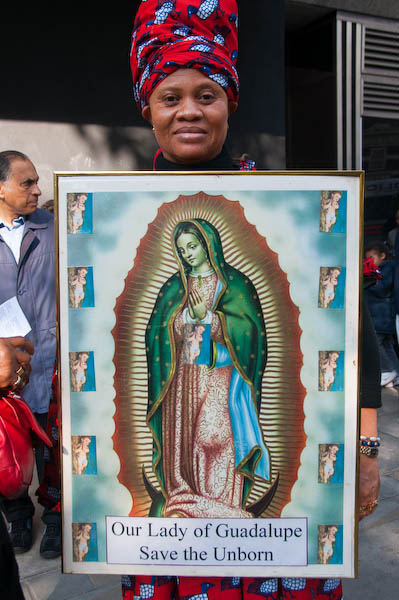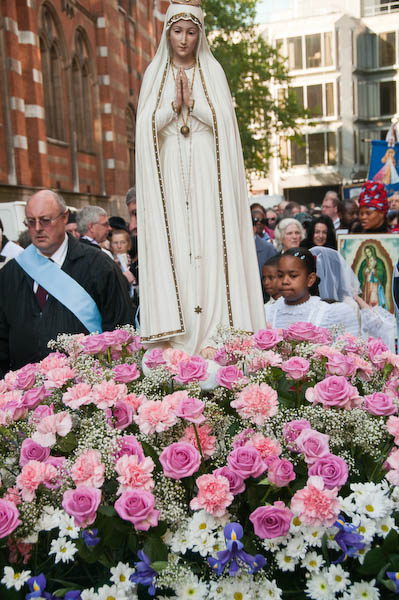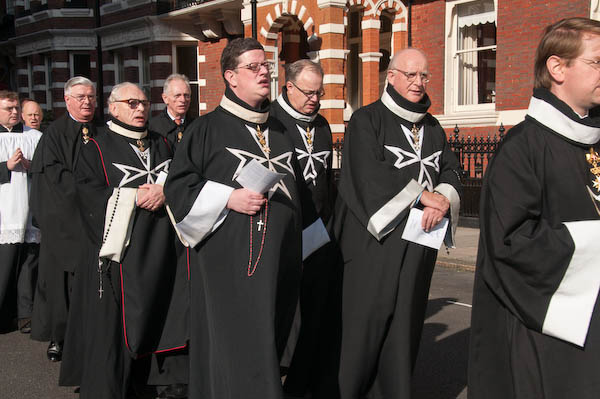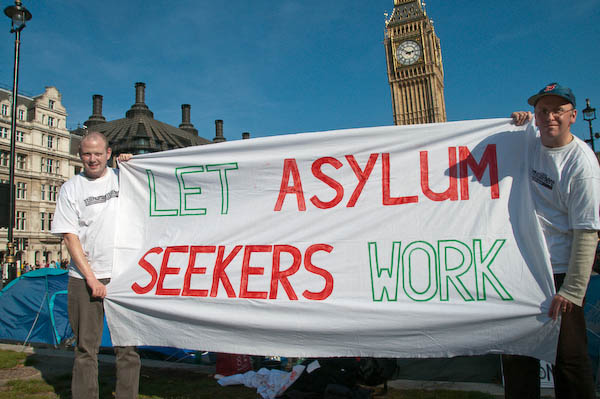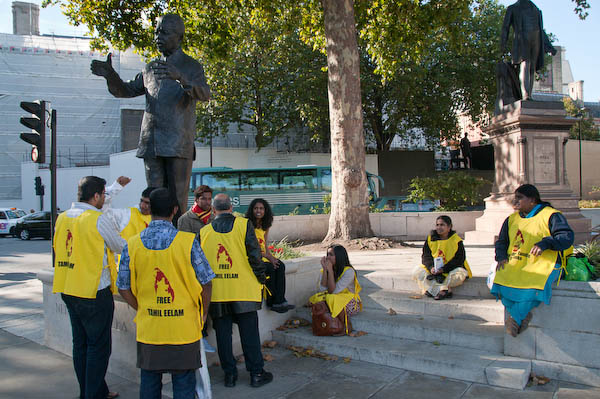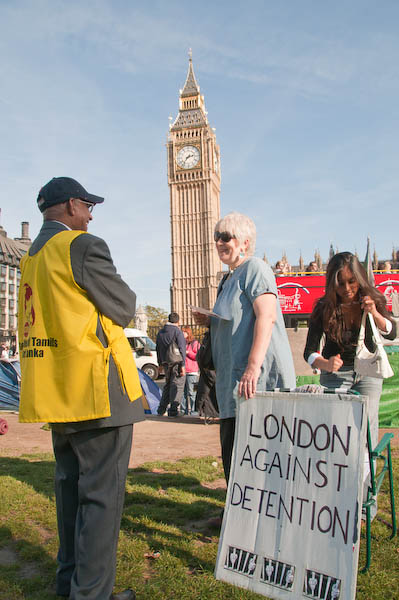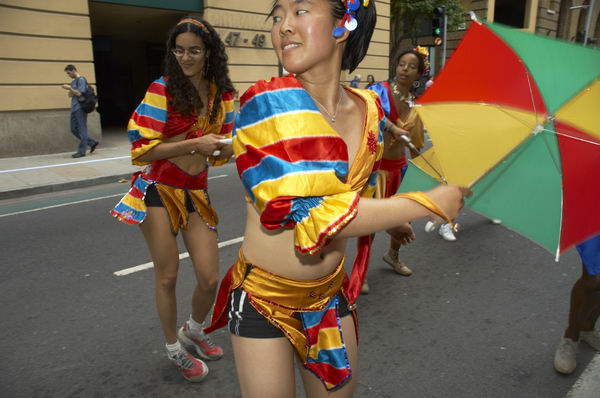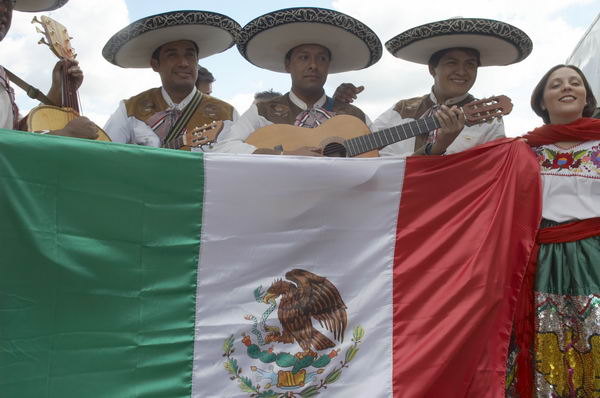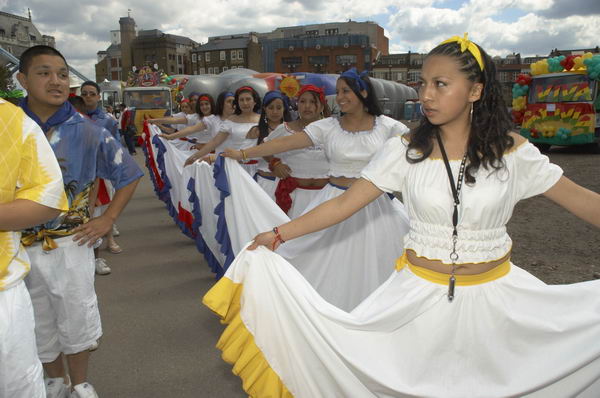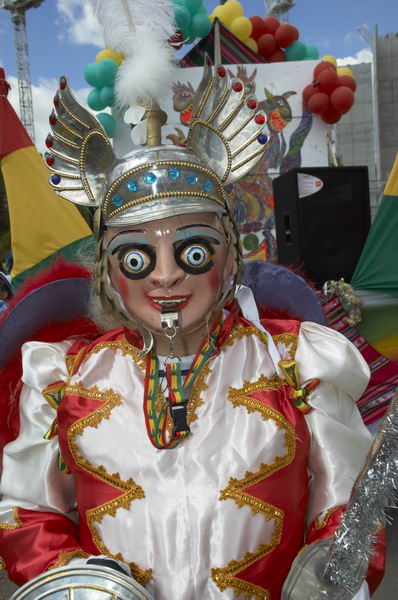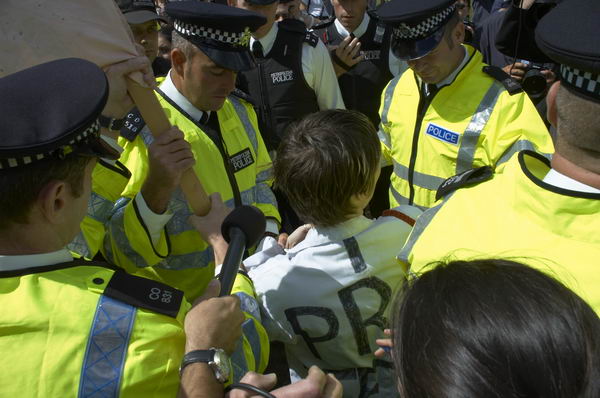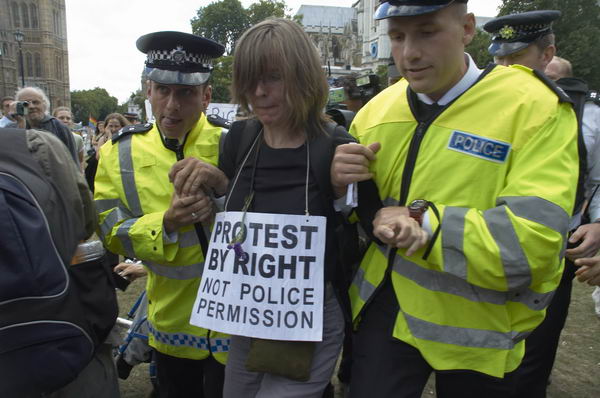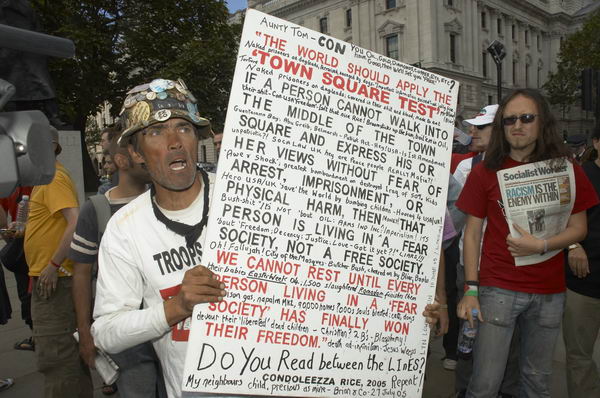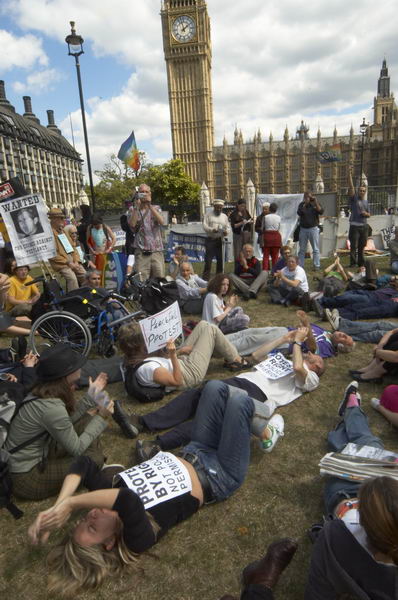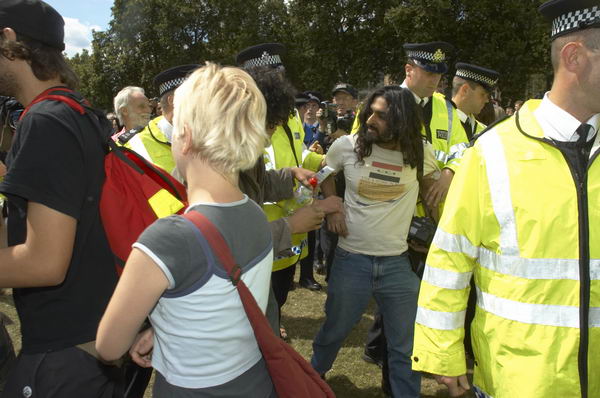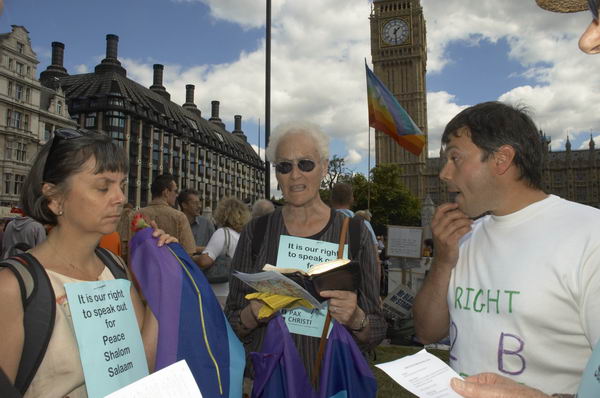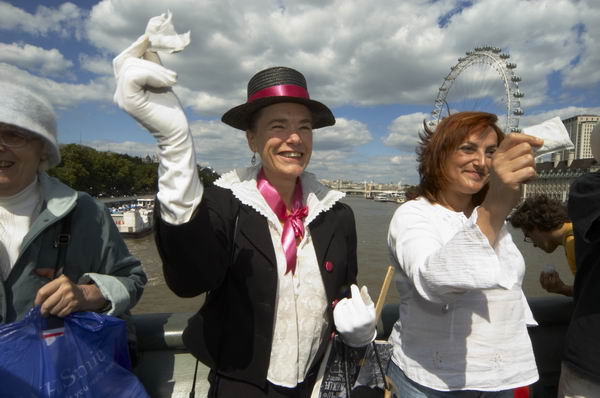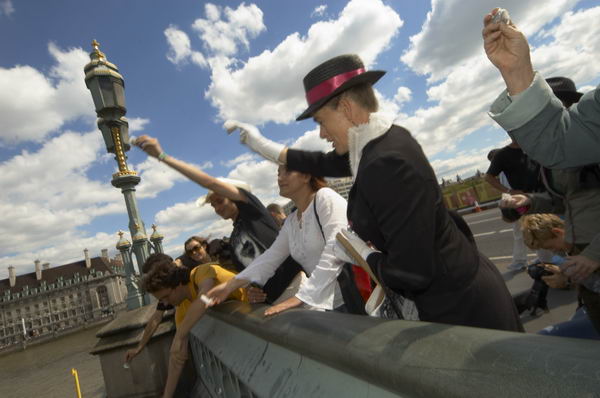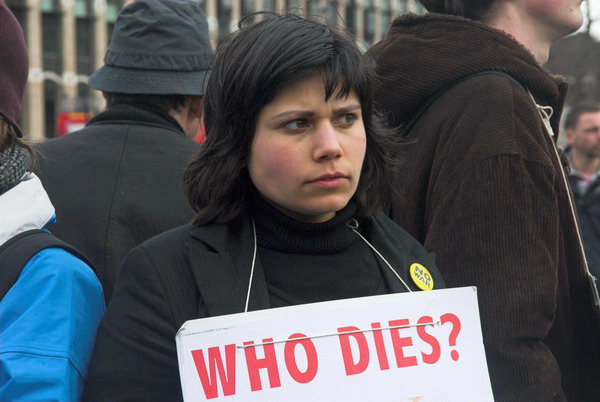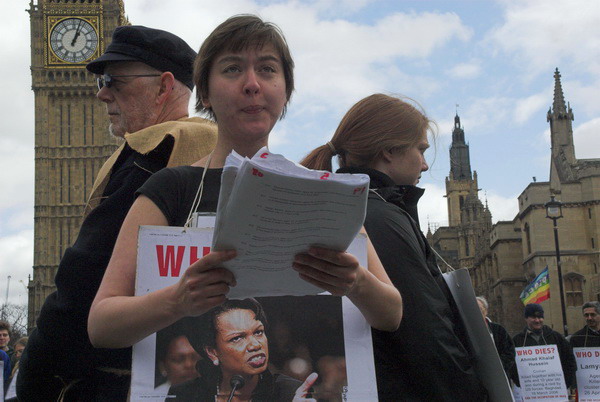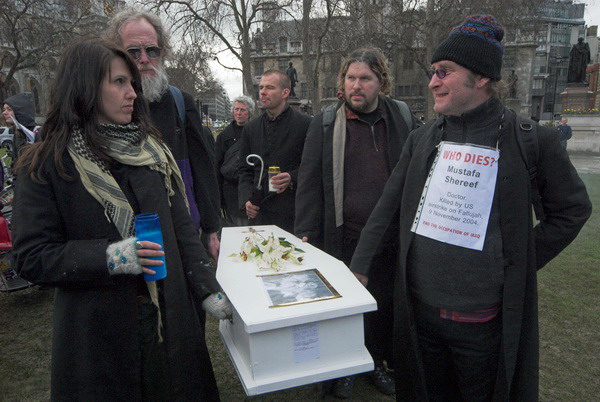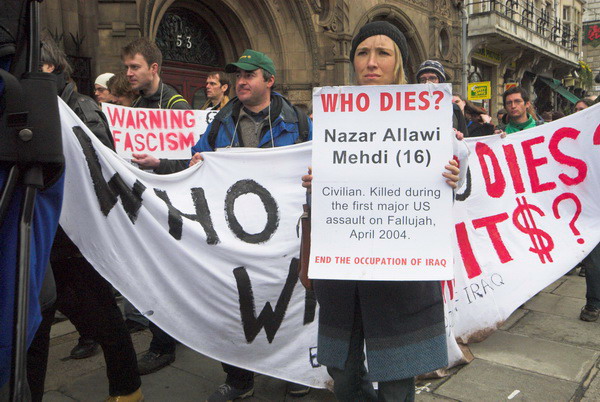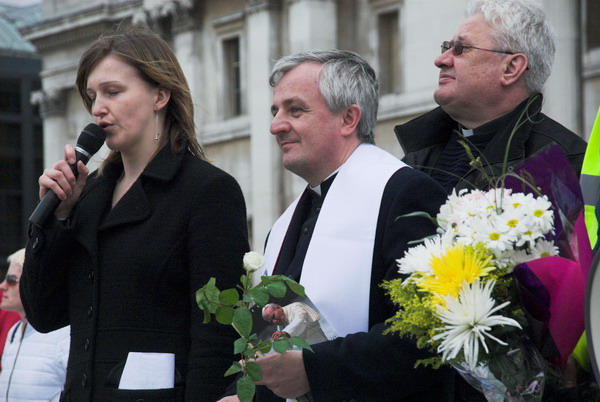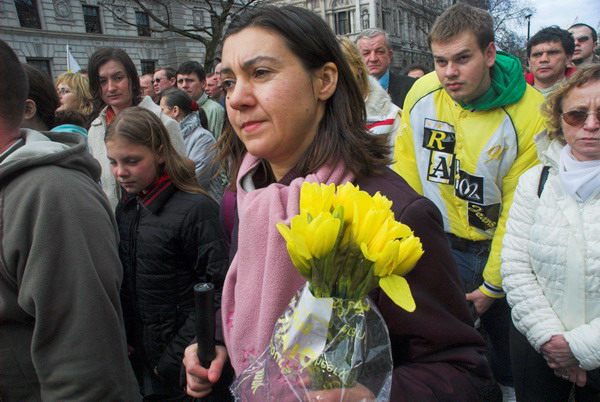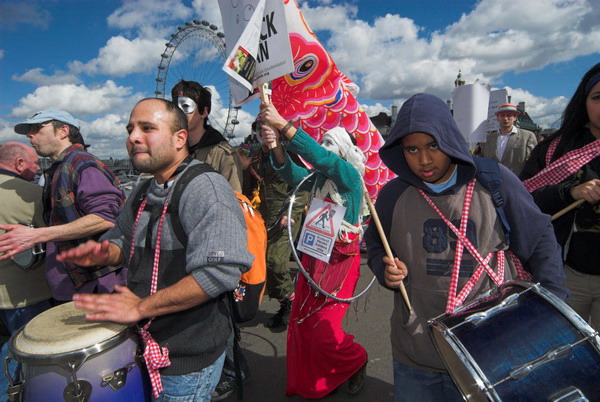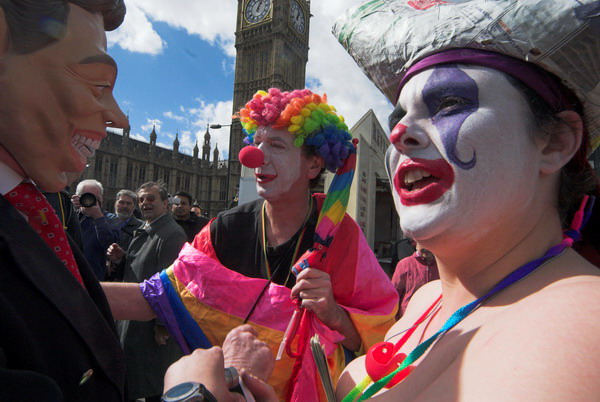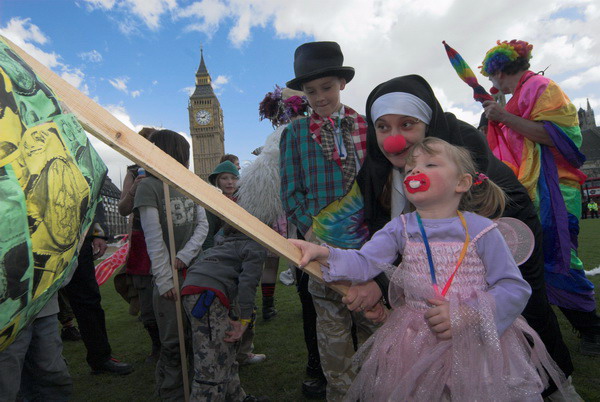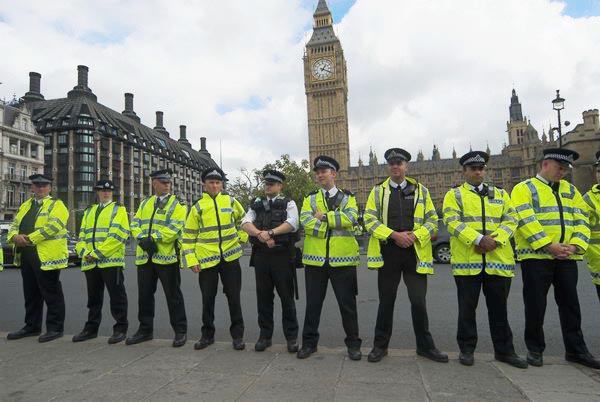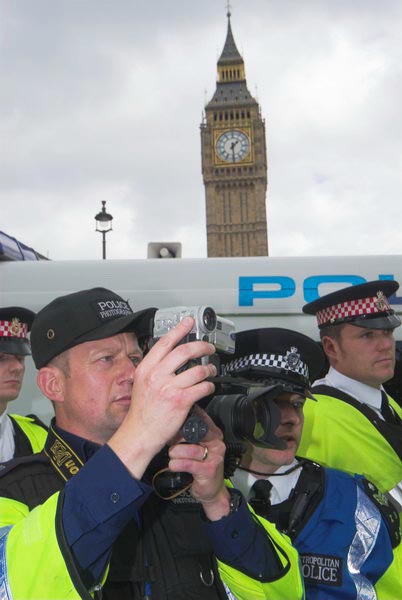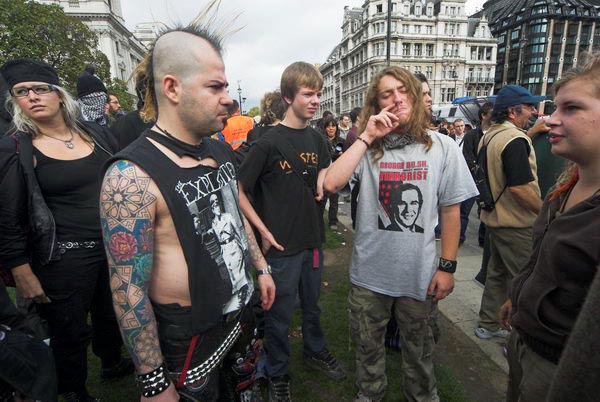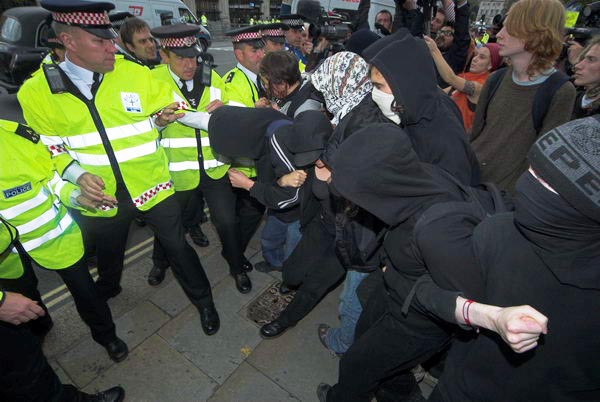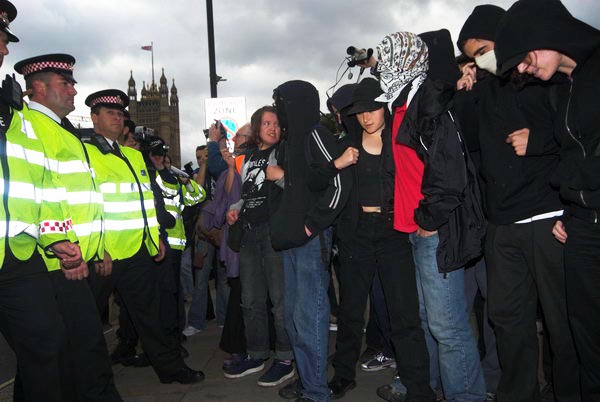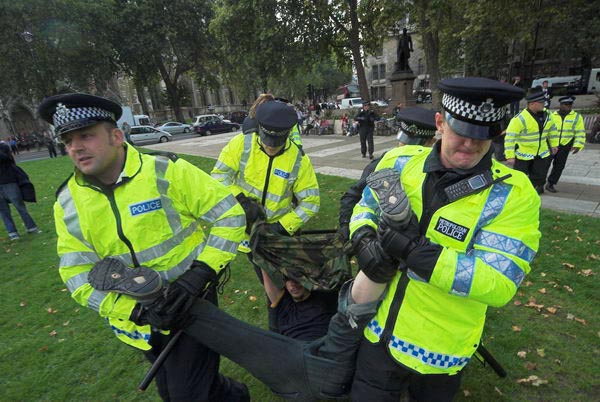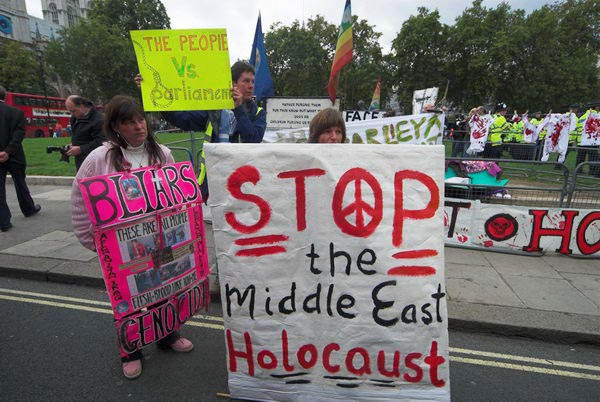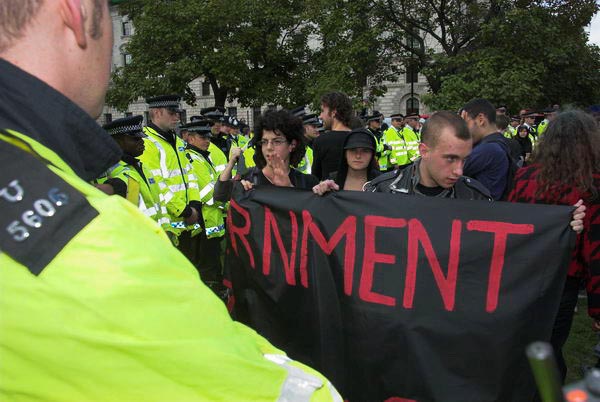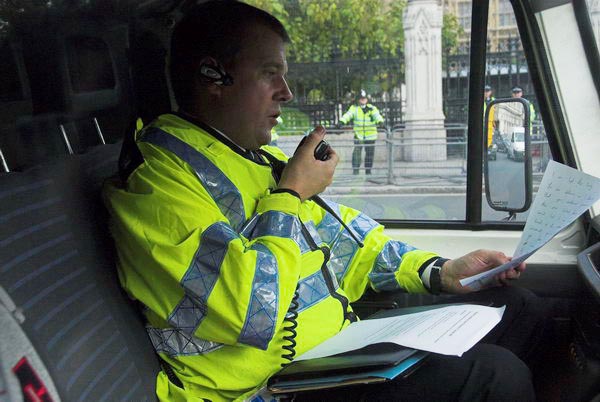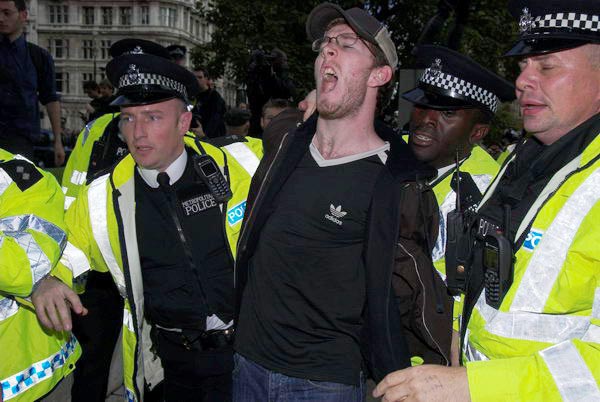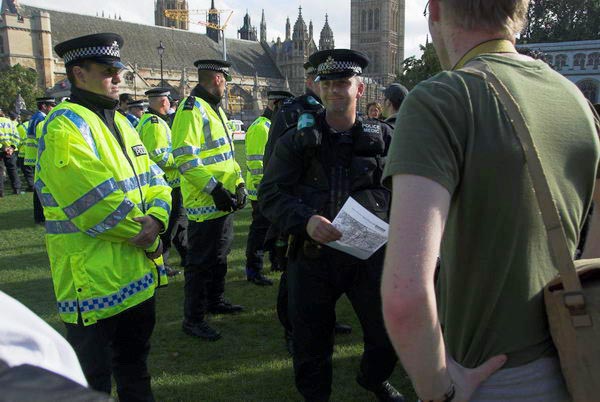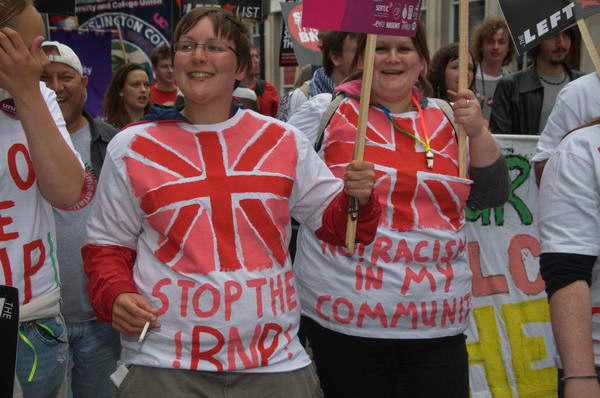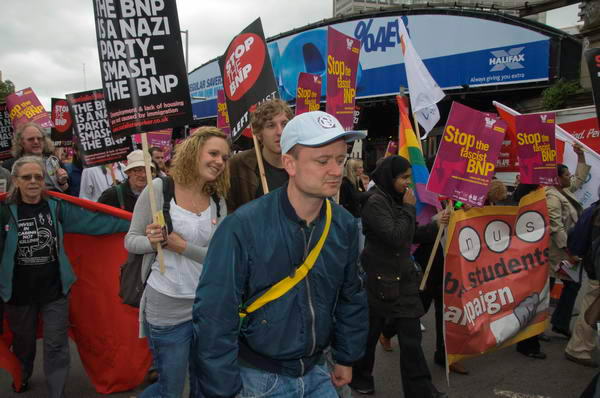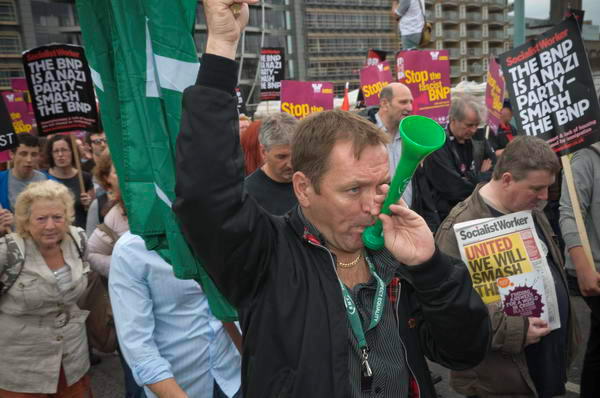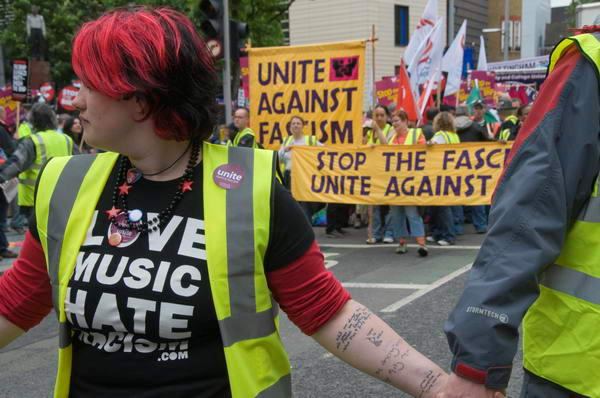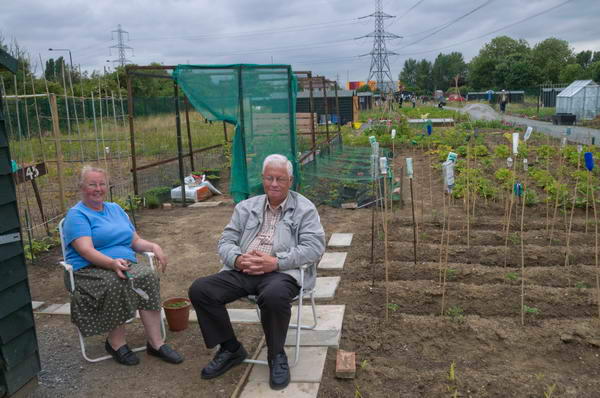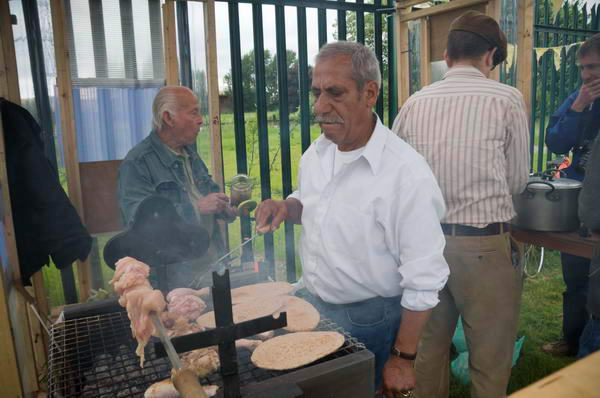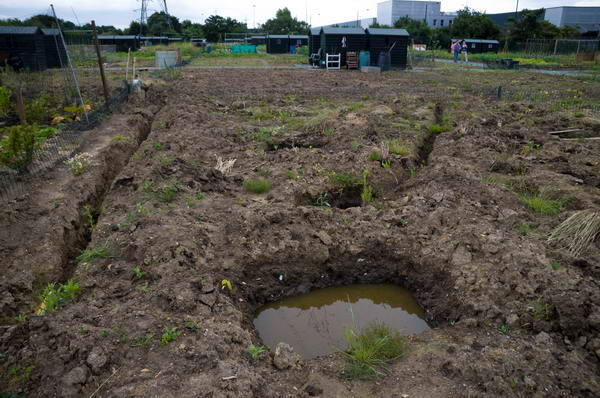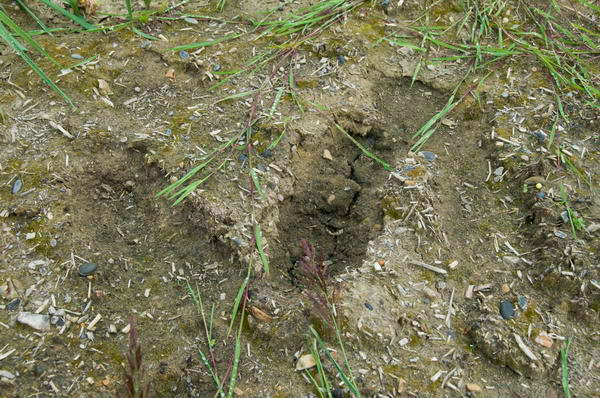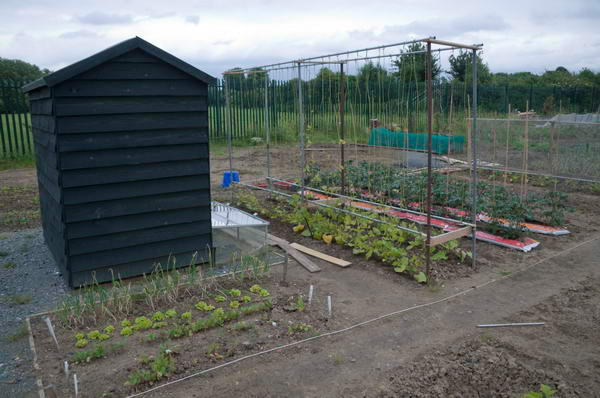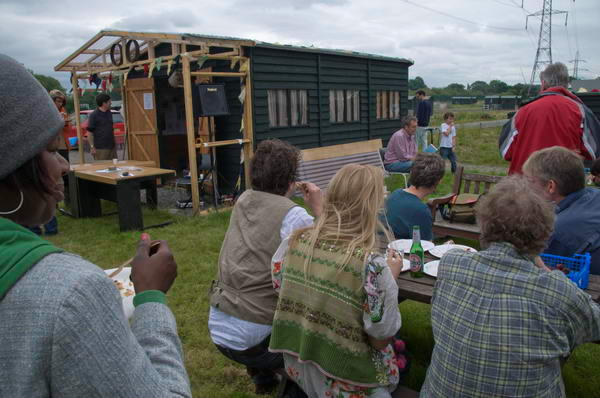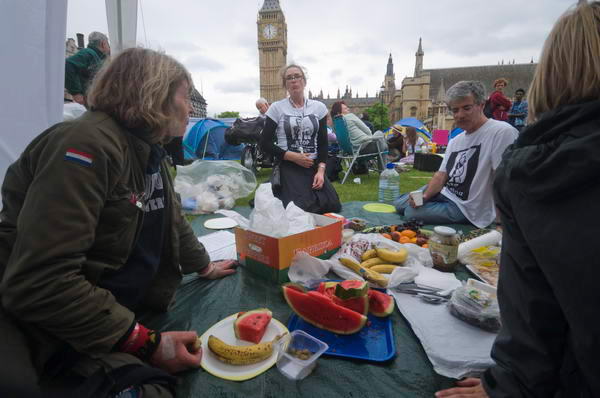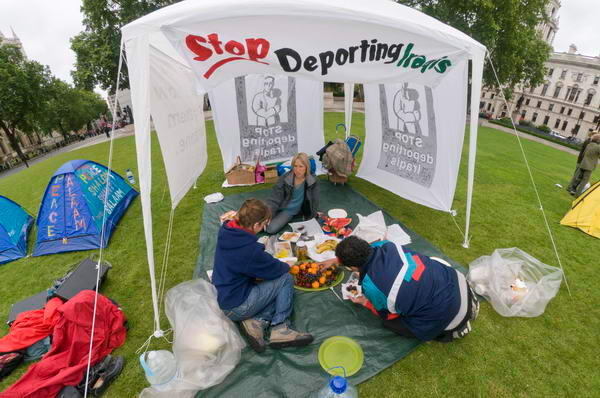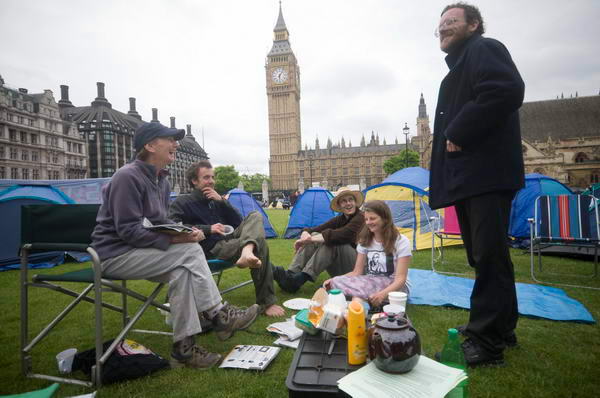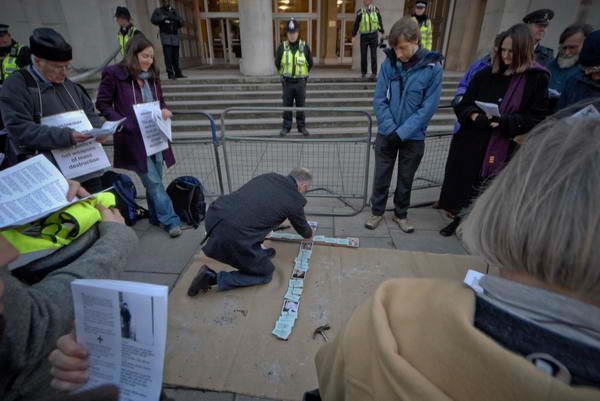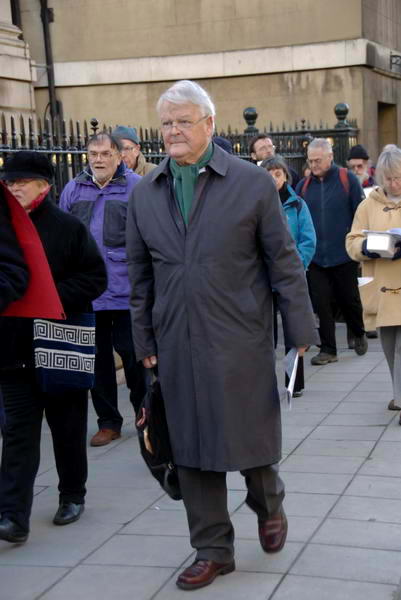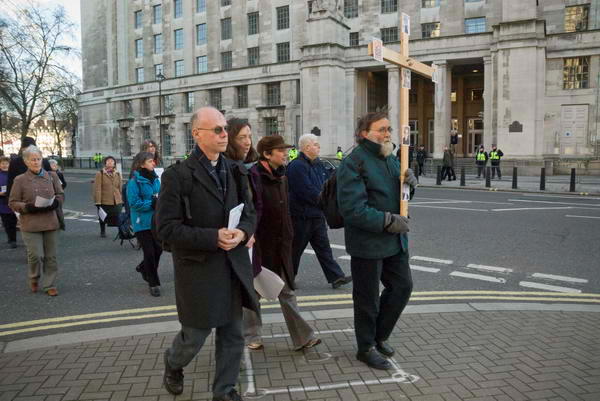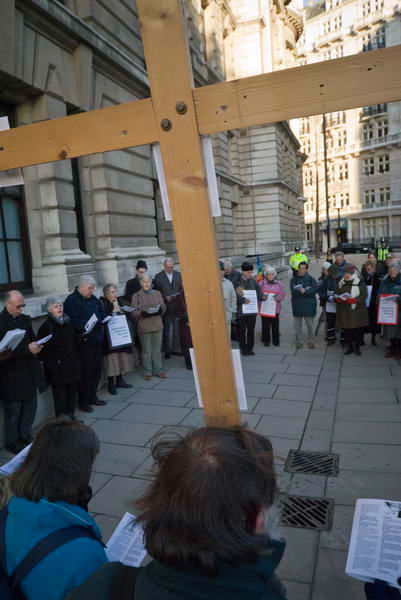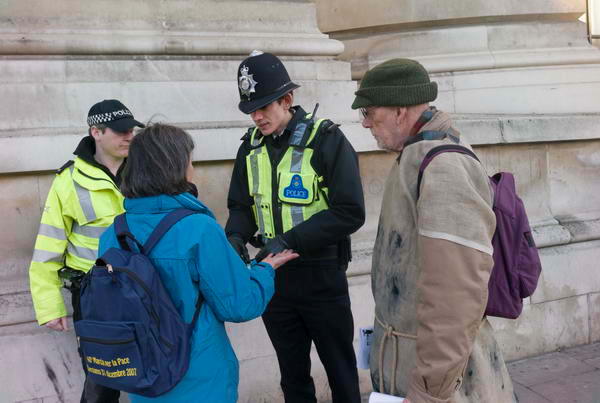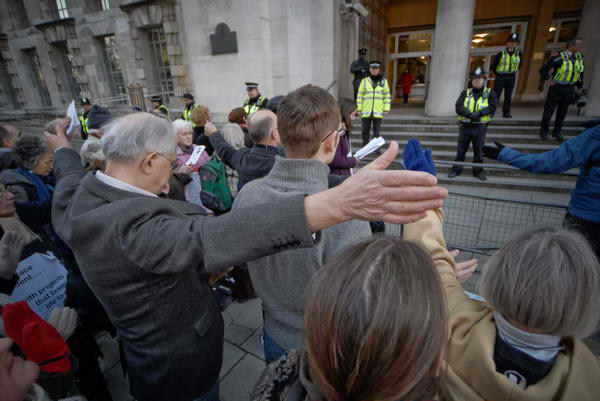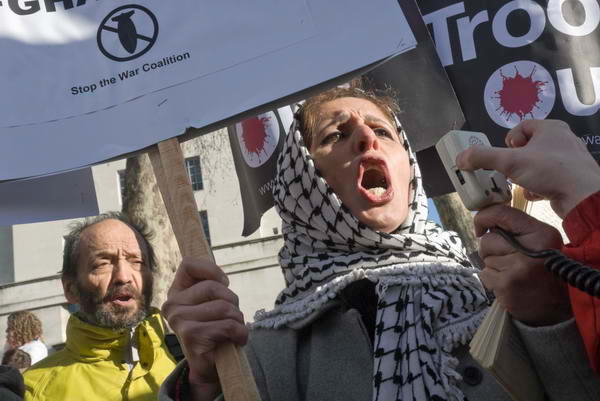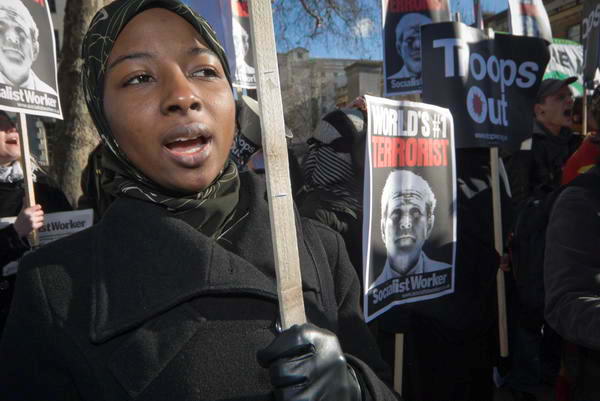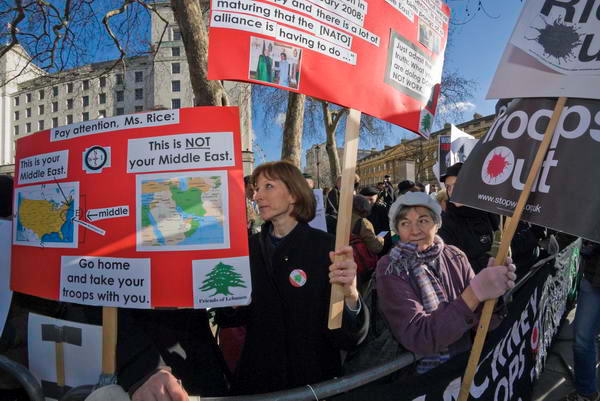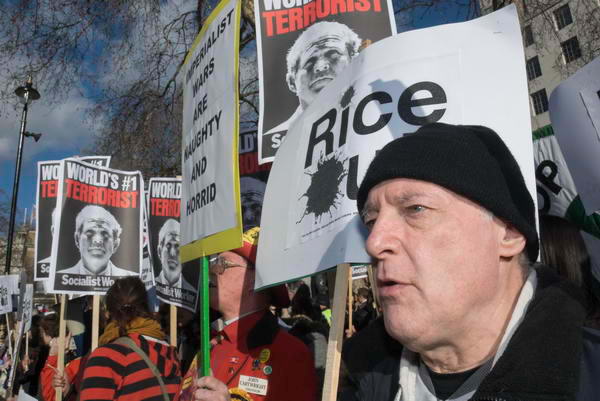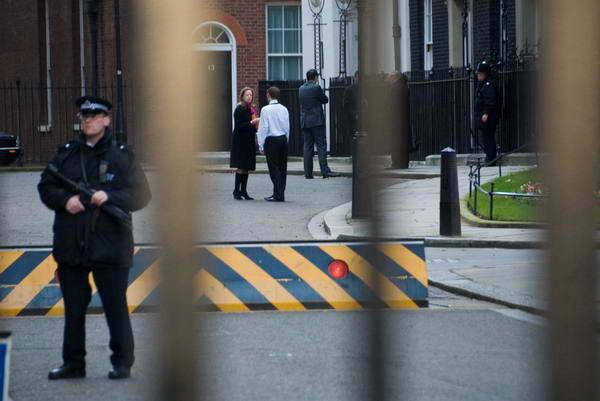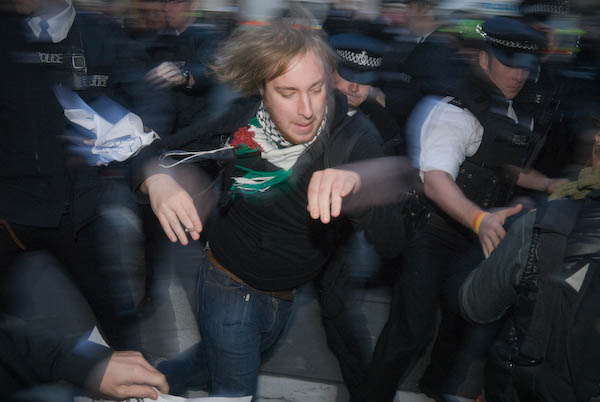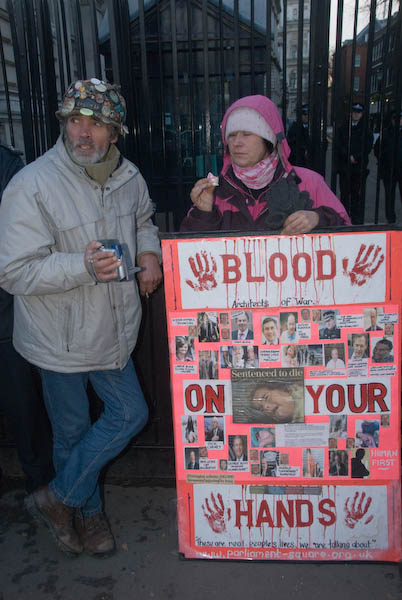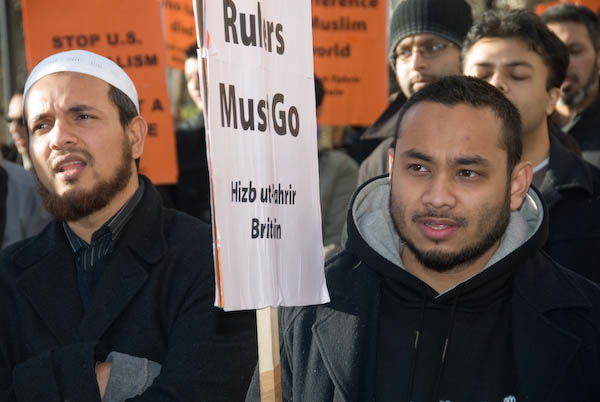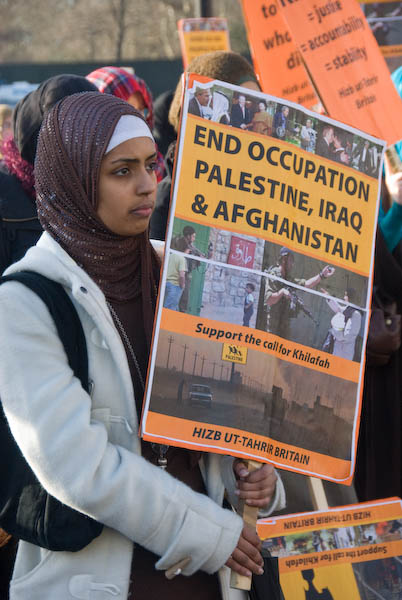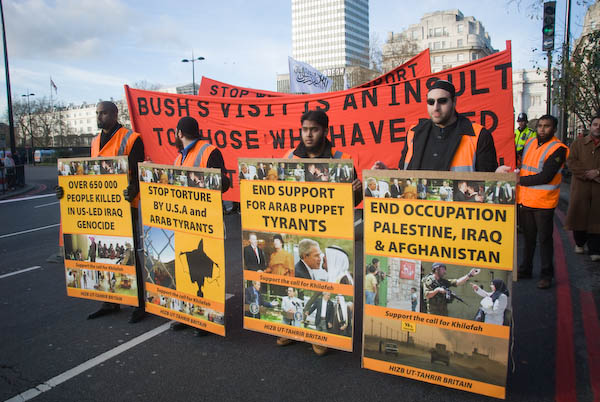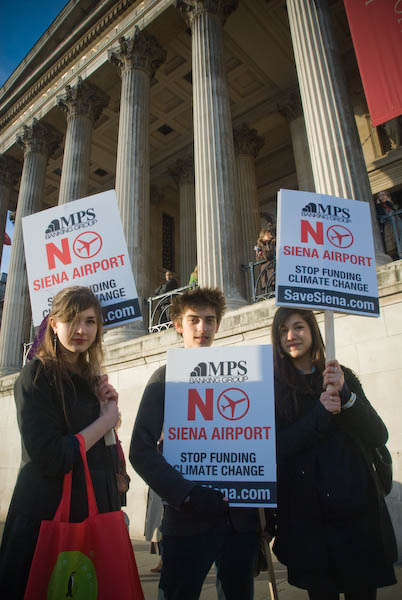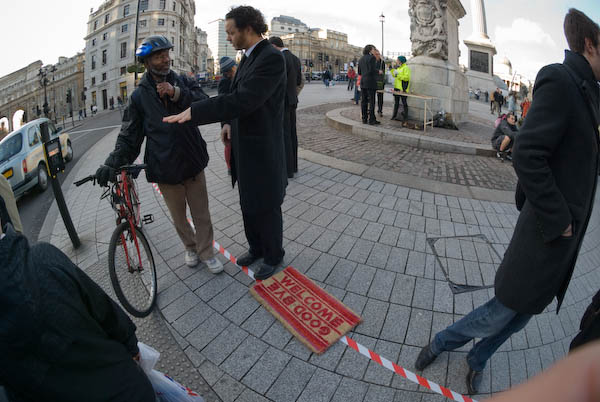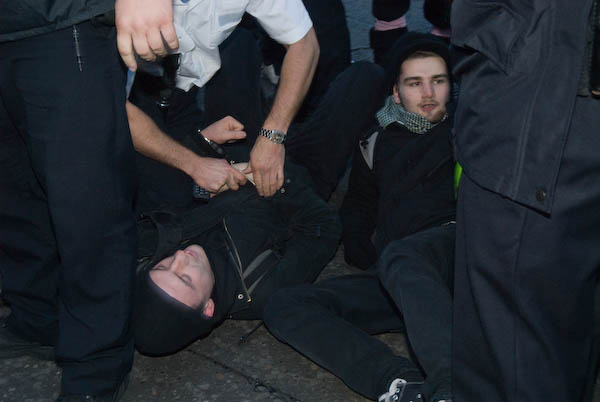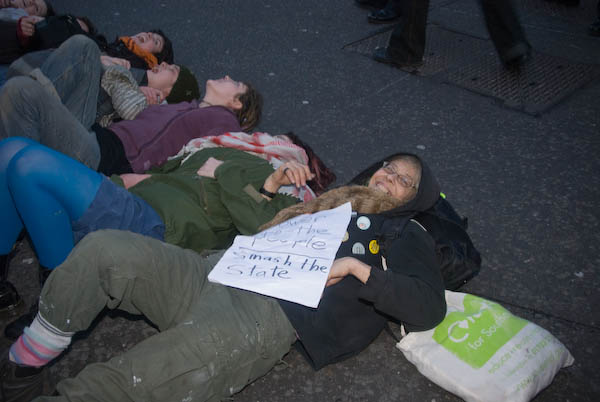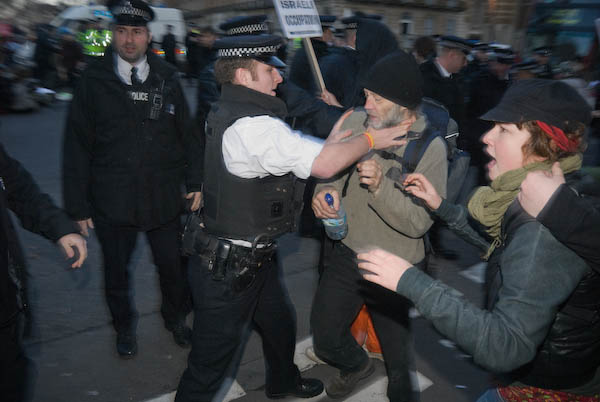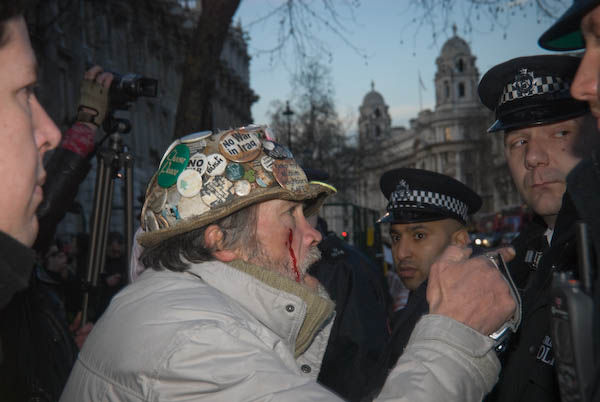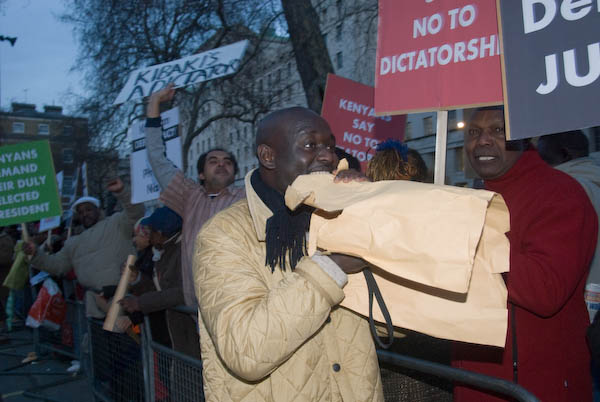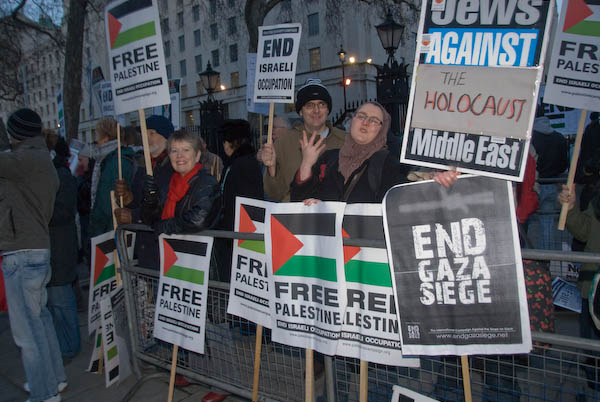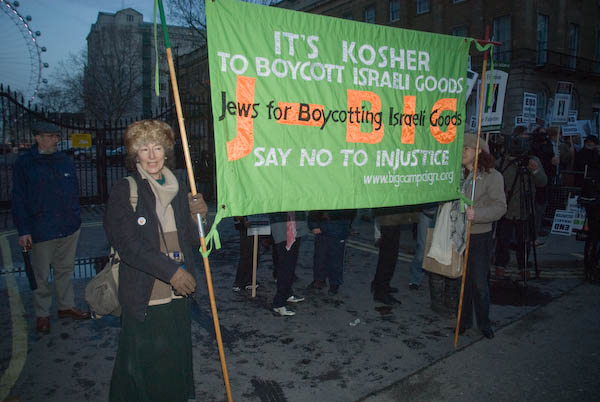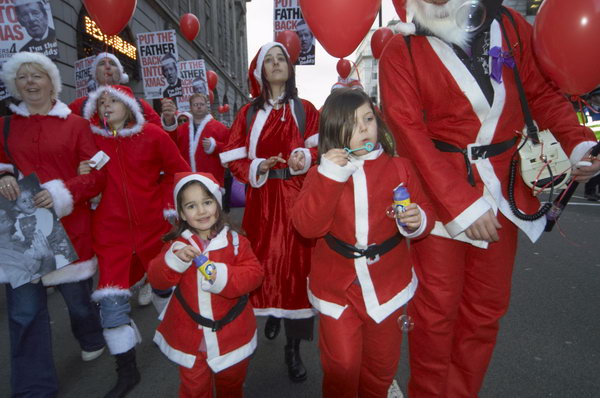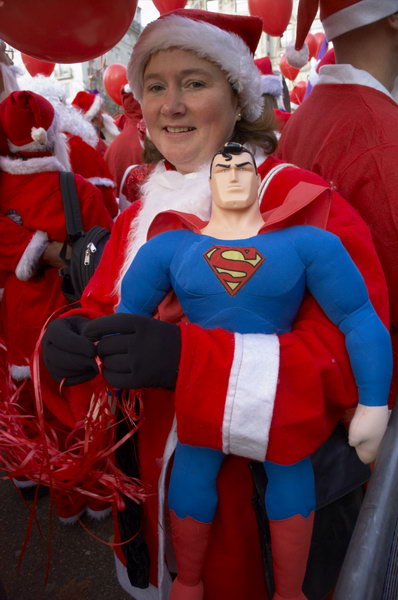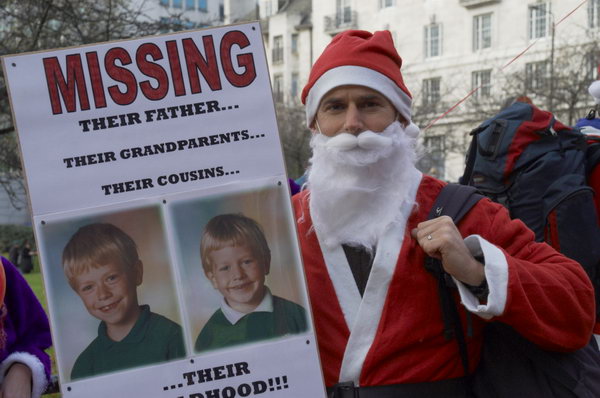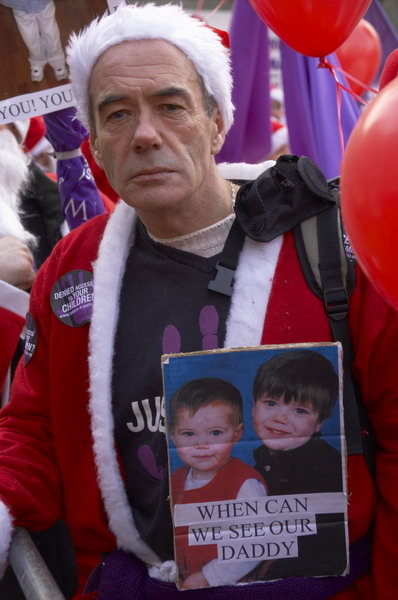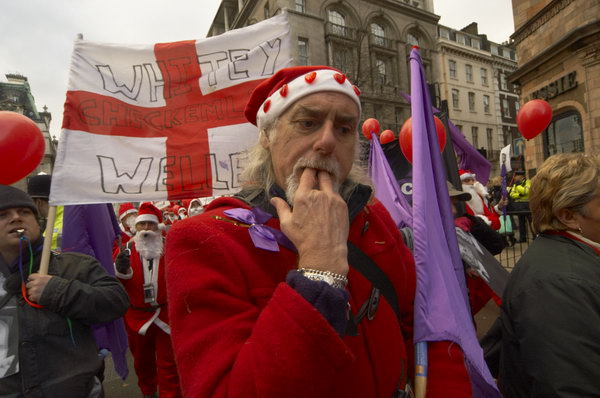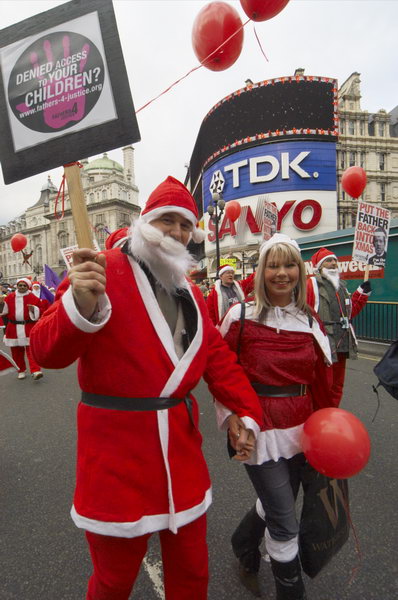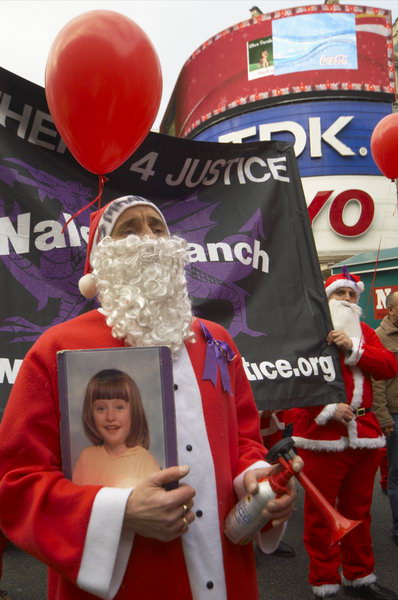
Scrap Tuition Fees & No More Fallujahs: On Sunday 29th October 2006 I went to the start of a National Union of Students march against university tuition fees, first introduced by New Labour under Tony Blair in 1998. University education had been free across the UK since 1945, with local authorities meeting the bill rather than students. In 2004, these fees, initially £1,000 a year, were increased to £3,000. In 2025 fees are now £9.535 a year and a major reform is expected later which will probably result in University education becoming even more expensive.
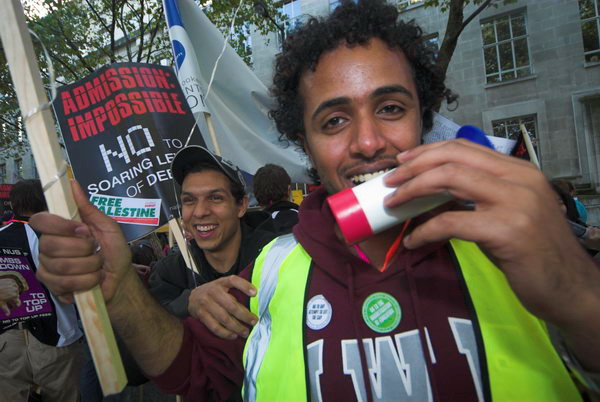
From there I left to cover a demonstration in Parliament Square where people were intending to set up a 24 hour ‘unauthorised’ peace camp protesting about the battles fought largely by US Marines against the Iraqi city of Fallujah in April and November 2004.
In the November battle US troops used white phosphorus, stopped military age males from leaving the city and treated all the inhabitants as combatants. The levelled thousands of buildings, denied Red Crescent access and according to the UN used “hunger and deprivation of water as a weapon of war against the civilian population“. Their use of depleted uranium shells led after the fighting to a high level of cancer, birth defects and infant mortality in the city.
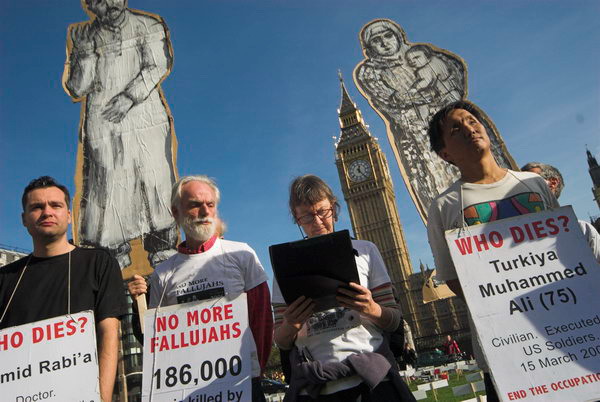
This protest was illegal under the Serious Organised Crime and Police Act 2005 which had required any demonstration within one kilometre of Parliament Square (excluding those in Trafalgar Square) to give written notice to the Commissioner of the Metropolitan Police six days in advance.
It was as a way to prevent embarrassment to politicians by seeing or hearing protests taking place, and to remove the permanent Peace Camp by Brian Haw which had been in Parliament Square since 2001, but it failed to do so, though it did lend to increased harassment of him by police and more shadowy figures. In 2011 these sections of the Act were repealed and the Police Reform and Social Responsibility Act 2011 imposed different and in some ways more draconian restrictions on the right to protest.
Below is the text I wrote about these events in 2006.
NUS – Scrap Tuition Fees March
Malet St
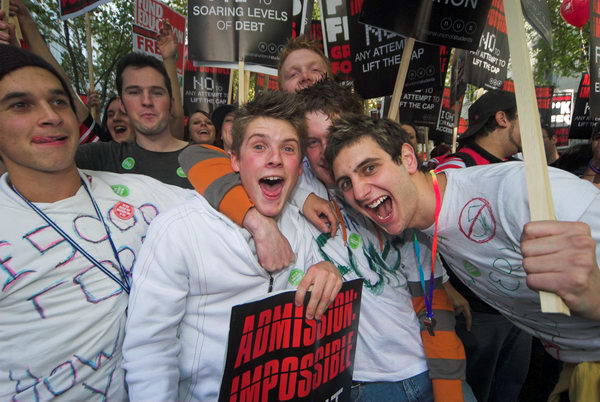
I arrived in Malet Street early for the start of the NUS march against tuition fees, but there were already plenty of students there, including many Scottish students who had come down to show solidarity.
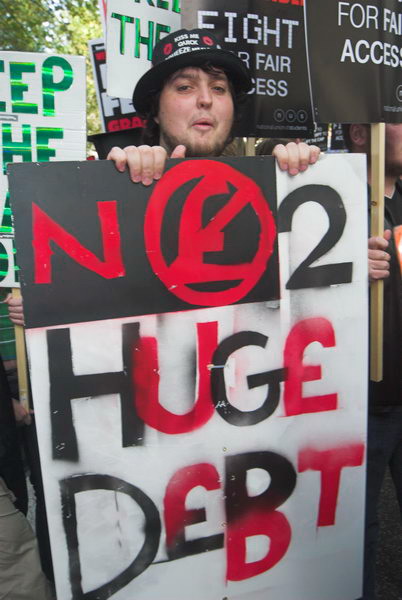
My father had left school at 14, at the end of his elementary education and never managed to complete the part-time studies which he had once dreamt would lead to qualifications. I came from the first generation of my family who could go to university, thanks to the 1944 Education Act that opened up secondary education and also the free tuition and student grants that were available. Without that support I would never have gone to university.
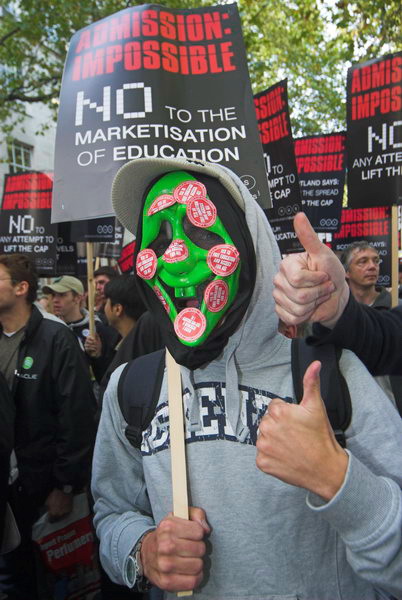
Both my sons were also fortunate to be able to study without having to pay tuition fees, [and to get maintenance grants] and were able to leave university with a degree and no debts.
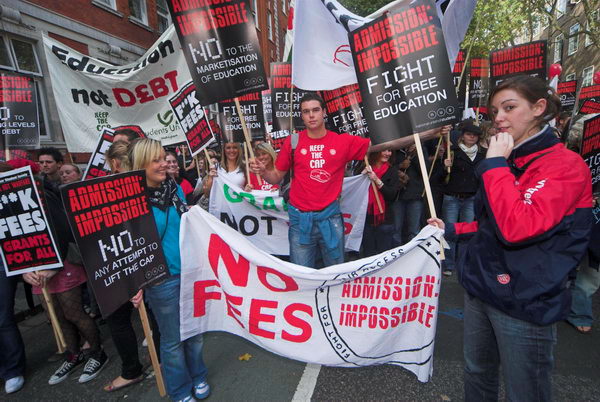
Things are rather different for most of today’s students, with tuition fees now at £3000 a year, and costs of accommodation increasing all the time.
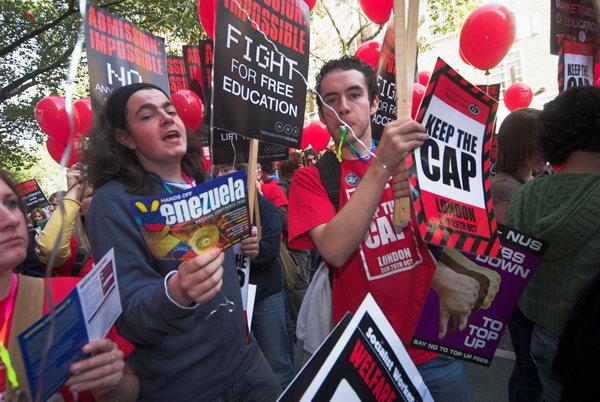
The NUS is campaigning for free education, but also calling for a cap on fees, as some universities call to be able to raise them without limits. Already the current level of fees seems to have led to a drop in the numbers of students entering universities.
more pictures on My London Diary
No More Fallujahs: Peace Camp
Parliament Square
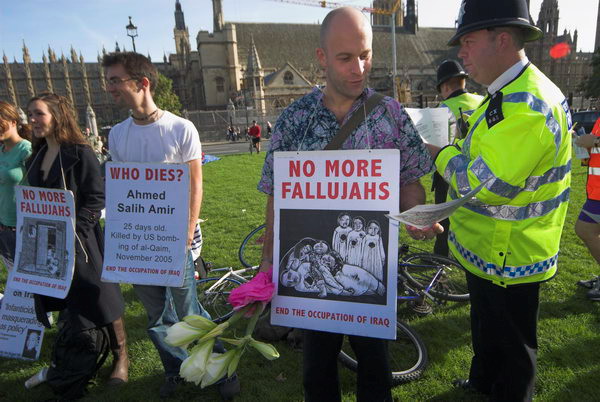
I left shortly before the march started to get to Parliament Square, where the 24 hour ‘unauthorised’ Peace Camp, ‘No More Fallujahs’, was about to start. Potestors formed a circle and joined Maya Evans and Milan Rai in reading the names of Iraqis who have died as a result of the occupation.
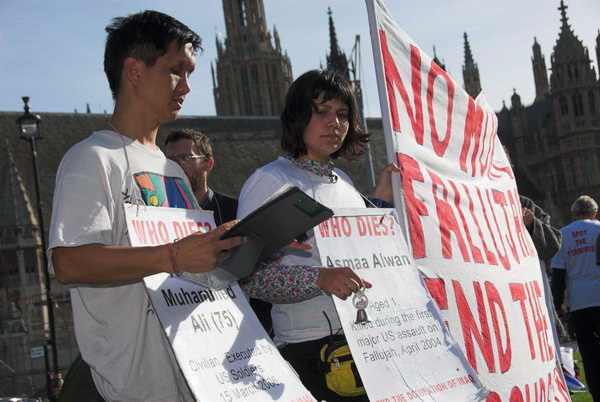
A year ago, the two were arrested in Whitehall for a similar reading. In december 2005 Maya was the first person to be convicted for taking part in an unauthorised demonstration under the Serious Organised Crime and Police Act, and in April 2006, Milan was convicted for organising the demonstration.
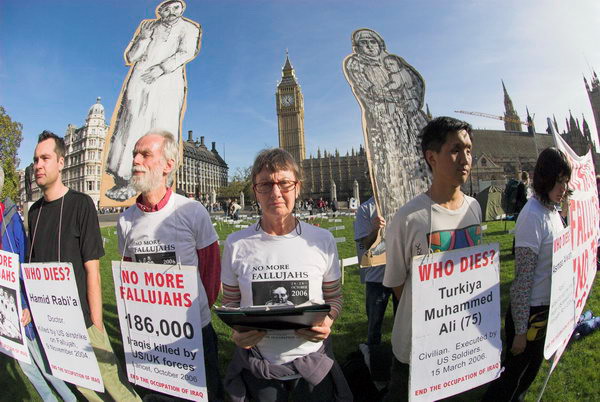
Maya is appealing against her conviction and fine, but was risking a prison sentence as arrest for this action would break the terms of her 12-month conditional discharge. Milan has refused to pay the fine of £350 with £150 costs imposed on him, and is also appealing to a higher court.
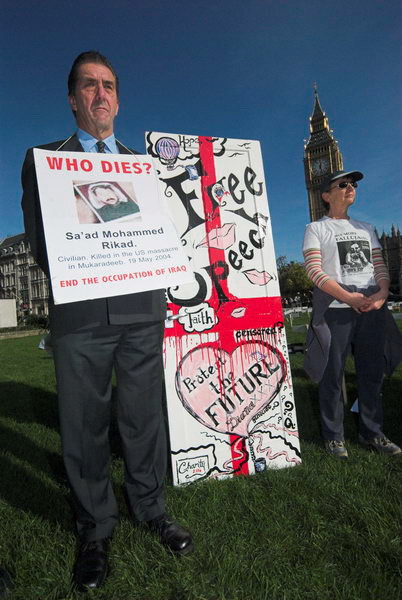
The demonstrators formed a circle in Parliament Square and began reading the names at one minute intervals, each marked by a bell. Various volunteers joined Maya and Milan in reading names from the list.
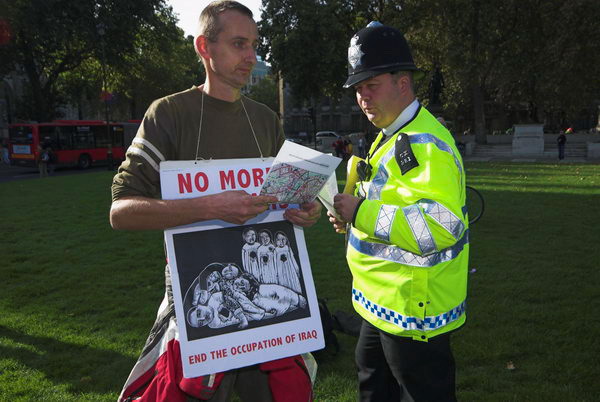
The police simply stood and watched for around half and hour, then at 12.30 began to circulate and hand out a notice to everyone that they were a part of an illegal demonstration. Where people refused to take one, they left a copy at their feet.
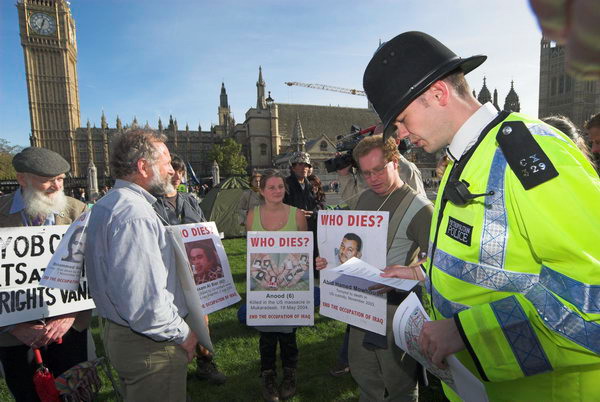
The officers concerned were extremely patient and polite, and were attended by a police photographer filming everything they did. Rather to my surprise one officer insisted I have a copy, despite my assurances that I was press, so I took it, while being recorded for yet another 15 seconds of so of video by the photographer, pointing out that I always complied with police directions.
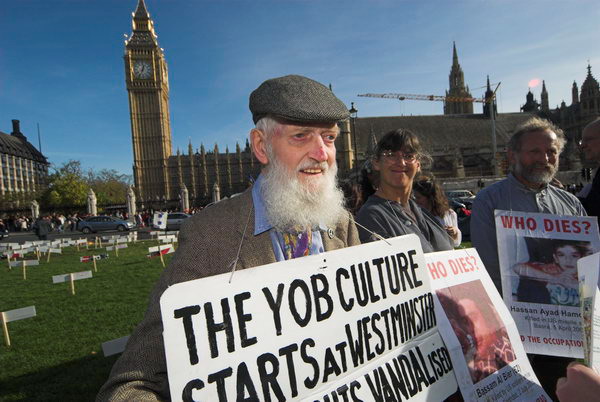
It isn’t as if I’m unknown to the police. Earlier in the day in Malet Street, as I walked past two officers, one turned to the other and said “looks who’s here then.” I turned and gave them a smile.
After that, the protestors decided it was time to pitch their tents, and soon the square was covered with small tents, mainly blue. For a while nothing much seemed to be happening, and I went away for an hour or two.

When I returned, the news was that police had taken four people away. they had been approaching individuals involved in the demonstration and asking them to give their name and address.
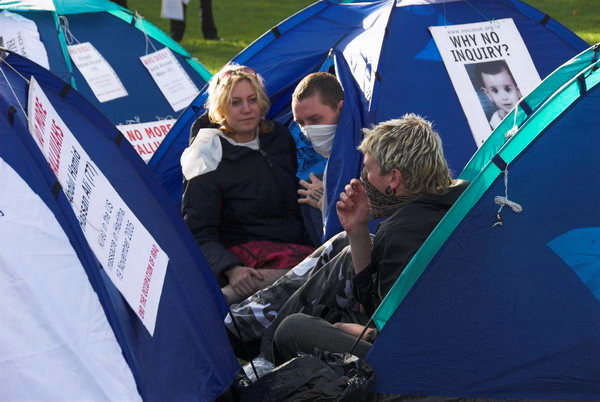
They were told that they could then later expect a summons for taking part in an illegal demonstration. People were informed that if they did not give their details, they would be taken to the police station and arrested for taking part in the event.
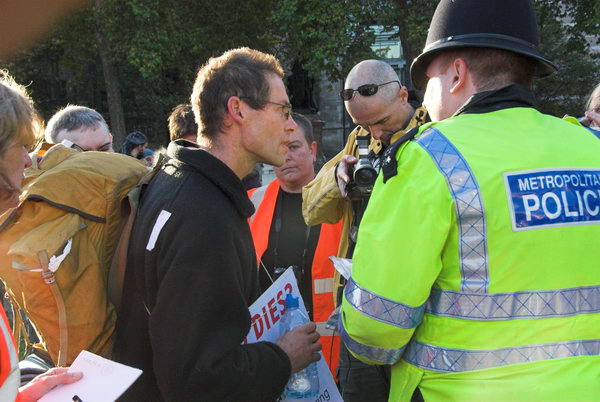
While I was there several other people were questioned and one was taken away when he refused to give his details. Those who gave their names and addresses seemed to be allowed to continue to take part in the demonstration. While I was present, everything was conducted civilly and without any violent handling of those concerned, although I was told there had been a little rough handling of at least one person.
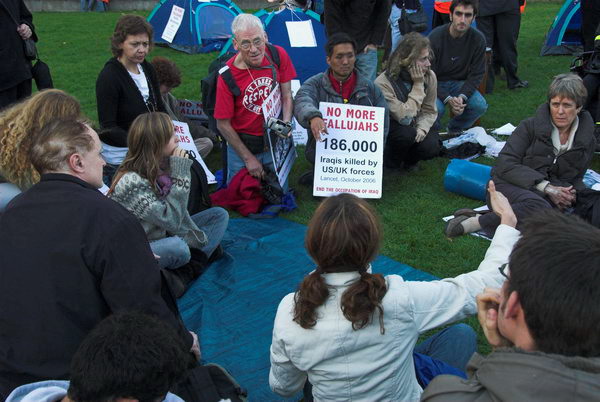
The demonstrators held an open meeting in the centre of the square to discuss what to do in the event of a more concerted approach by the police, while on the corner by Churchill’s statue, Brian Haw was making use of his megaphone to hold his weekly service. Its a sermon I’ve heard many times and I felt it was time to go home.
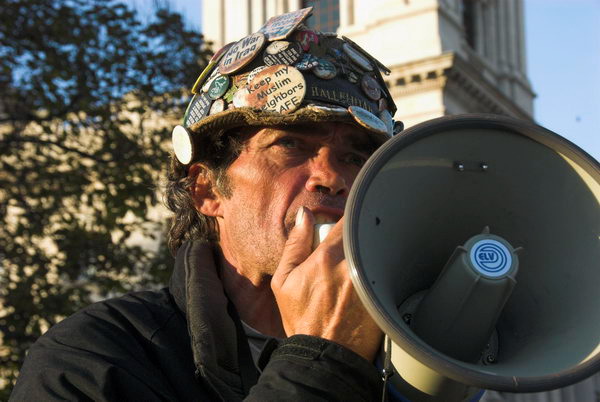
More pictures on My London Diary.
Flickr – Facebook – My London Diary – Hull Photos – Lea Valley – Paris
London’s Industrial Heritage – London Photos
All photographs on this page are copyright © Peter Marshall.
Contact me to buy prints or licence to reproduce.
